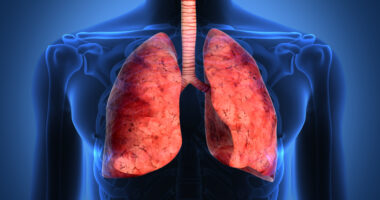Strategies that make exercise with pulmonary fibrosis easier for me
What I'm keeping in mind as I begin a gym-based rehab program

Exercise is important for people with chronic illness. But as someone living with idiopathic pulmonary fibrosis (IPF), a disease characterized by progressive scarring of the lungs and difficulty breathing, I know working out is easier said than done. I’ve also found some strategies that make it easier for me.
Last August, I underwent surgery to repair my left knee. I knew it would involve an extensive recovery, but I never thought I’d still be struggling to walk nearly five months later. I’ve been doing physical therapy weekly, but I recently met with my surgeon, who recommended another approach.
My surgeon acknowledged that my recovery seemed slower than normal and suspected that combining an exercise program with my physical therapy goals could expedite the process. I’ll now be working out in a gym under the supervision of a physiotherapist and a kinesiologist to hopefully mobilize my knee faster. While I’m excited about the possibility of being able to walk sooner, I’m also anxious about starting a gym-based rehab program.
Learning to exercise with pulmonary fibrosis
While exercise is beneficial for those of us with IPF, it’s also challenging. After my diagnosis in 2016, I wanted to keep playing sports as long as I could, thinking my lung disease would progress slowly. To ensure my safety, I had to take many precautions, and eventually I grew tired of explaining to others why staying active, despite my lung disease, was important.
When I reflect on that experience in anticipation of starting a new rehab program, I remember the following strategies made exercise easier in the early days of my IPF journey:
Transparency: Back in 2016, I didn’t require supplemental oxygen while playing sports or working out at the gym, so most people didn’t realize I was living with a progressive lung disease. One of the challenges of IPF is that it can be invisible, so I took it upon myself to be transparent about my disease with my teammates, coaches, and program staff — especially the lifeguards supervising me in the pool. While it was uncomfortable disclosing my medical condition, I found that my transparency made everyone feel a little better. I never regretted my choice to share how others could help me remain safe.
Provide education: This went hand-in-hand with transparency; I always educated others about IPF, especially when they told me that I looked too healthy to be living with a lung disease. Although I quickly grew tired of constantly explaining my condition, it was important, because coaches and gym staff were then able to modify my exercises accordingly. These fitness professionals had a hugely positive impact on my physical and mental health in the early days of living with IPF.
Consistency is key for progress: As I embark on this new rehab program, I’m trying to remember the importance of consistency. As IPF patients, our bodies are already battling numerous symptoms, including hypoxia, shortness of breath, coughing, and joint or muscle pain. Given these issues, it’s easy to be inconsistent with fitness habits. While exercising regularly is important, I must also remember to show myself compassion.
Set realistic goals: This one is hard for me because I don’t want to accept that I can no longer keep up with my peers, even though that’s my reality. I recently had to reevaluate my goals for this rehab program because what I wanted to achieve in a month’s time wasn’t actually doable. This doesn’t mean I wouldn’t make progress, but my physiotherapist gently reminded me that setting an unattainable goal would result in me being hard on myself. My physical health will be taxed enough by exercise; I need to preserve my mental and emotional health by setting realistic goals.
Do you have any additional tips for exercising with a chronic illness like IPF? I’d love to hear from you in the comments!
Note: Pulmonary Fibrosis News is strictly a news and information website about the disease. It does not provide medical advice, diagnosis, or treatment. This content is not intended to be a substitute for professional medical advice, diagnosis, or treatment. Always seek the advice of your physician or other qualified health provider with any questions you may have regarding a medical condition. Never disregard professional medical advice or delay in seeking it because of something you have read on this website. The opinions expressed in this column are not those of Pulmonary Fibrosis News or its parent company, Bionews, and are intended to spark discussion about issues pertaining to pulmonary fibrosis.









Paul
The key is being physically active on a consistent
Basis. I was diagnosed with IPF in 2020
After my open heart surgery. I record my
Weight,bp, oxygen and exercise time every day.
I take Ofev but no oxygen. My main exercise
Is rowing. Love it as there is no joint pounding.
Rower now has over 3600 miles on it.
It helps to have good music on during exercise
Periods. Also getting a good shot of fresh air
On walks has helped myIPF. (Not on colder
Days less than say 35 degrees). Take care
And keep moving.
Ken Fallon
I entered a pulmonary exercise program at a local hospital a few weeks ago.. it’s hard for me because I was always at the gym doing quality workouts before diagnosis back in 2021.
Now… the gym time is completely managed and I’ve come to realize, like you, I could no longer do my routines.. I am struggling with the modification but am adapting…
CRAZY MALADY for sure.
Thank you for your posts.
Ken (from RI).
Linda Hogan
Is it possible to receive these in email?
Carol
I find that water aerobics is the best expertise for me.
Stewart Brand
I'm 86; diagnosed with IPF six years ago. Since then I've worked out with weights for an hour and a half three times a week. Dumbells, bench, floor mat. Using a great app called "FitBod."
Last October, a bout of pneumonia took my lung capacity down a notch. So now I use an Inogen G5 oxygen concentrator to perk up my blood oxygen to 98% during the brief rest periods between sets and supersets. That way I've been able to keep up my strength (and muscle mass) despite the lung setback.
Keith
Great perseverance - how low does your Sp02 get between times with the G5?
Ted Fecteau
Thanks Charlene! I was diagnosed with pf/NSIP in 2017 and subsequently with touches of other forms (not asthma nor COPD). I learned as much as I could about my conditions online and from buying and reading books and now have a reasonable understanding and appreciation of what I can do and acceptance of what I cannot do. I also have the complications of being 81 with arthritis, etc.
My biggest difficulty is motivation to exercise. I both know and have personally experienced the benefits of exercise. But I think I have also taken to heart being kind to myself. Too kind.
I find that I exercise best in rehab and in a gym under guidance by a physiotherapist. But six weeks in hospital with gallbladder treated by antibiotic drip put an end to structured exercise. So …
But any type of exercise is better than none. I try to not sit too long per session otherwise I become stiffened. When I think of it, I do leg lifts in my comfy chair with at least 30 repititions otherwise I think it is not exercise, just movement. I also bought 1, 2 and 3kg dumbbells which I leave by my chair and do different exercises/movements (x 30 each) at least every day. I don’t get too puffed doing these and 30 reps is about right. My tv chair also has a stretch band with a handle attached which occasionally helps wile away exercising through the tv adverts. I still do not exercise enough but I am doing more than nothing here in New Zealand’s current nice weather. Still trying to find better motivation alone but you do inspire me making me feel guilty for not doing more.
Bill Opsahl
I was told that I had IPF and after 6 months of testing I was told to be there on Monday and start with the medication or the placebo or whatever you’re going to get. When we got there they said we have good news and bad news. You don’t have IPF you have ILD. So you can’t be in the trial. And I haven’t been able to find anything for what I have. But I go to the gym always 5 days a week or 6 days a week. My exercise is 30 to 60 minutes a day on the treadmill. Not fast I do 3 miles per hour. Then I do some weights but not very heavy. I’m in an exercise program with Mayo every day and you do two 6 minute walks. Wednesday I walked 20,214 steps. I only got credit for 18,200. That’s what I do for my exercise. I’m short of breath and it seems to get worse little by little. If anyone knows a better way to exercise I would like to know what it is. I’m not on any medicine. I will be 85 next week so I’m not able to do much more.
Eleanor Pulis
Hi Charlene, I appreciate your experience with IPF and think your approach is fantastic. I have lived with this disease for many years now (my sister died from it and her Dr told me that she had a quick progressing version and I have a slow version) and now I am 87 years old. I have both knees and both hips replaced and I'm walking pretty well, no pain. I have been a swimmer most of my life and after my children were old enough, I took up Masters (25 years old and up) Synchronized Swimming, now called Artistic Swimming. I think all those years in the water helped me live with IPF. I still swim, not synchro, 25 yards at a time and then I have to stop for at least 1 minute to catch my breath again. Then I swim another 25 yards with another stop. I've told everyone in the pool about my condition, so they understand.
The purpose of my rant is to encourage you to keep on doing what is working for you, You're doing GREAT! Keep exercising and participating in all you love. Your knee will get better! All the best to you, Eleanor
Douglas Spencer
Charlene:
I was diagnosed with IPF back in 2018. I have always lived an active and athletic life. I am 81 years old and just decided to live each day to the fullest, which I do. I have been on oxygen 24/7 for a year and a half now. Just recently graduated from 8 LPM to 10 LPM. So here’s my point. Exercise is crucial to your overall health and to your damaged lungs as well. I love golf and shooting sports. I play golf 2-3 times per week which has been my salvation. I am blessed to live in Florida 6 months of the year which really helps me. If not physically, for sure physiologically.
So use the necessary oxygen you need to stay active for as long as you can, as this will continue to give you a high quality of life. Life is precious and every day is a gift, so be grateful for every day the Lord gives you. I hope this helps!
Doug Spencer
Paul Swanson
When I go to my pulmonary rehabilitation program instead of telling myself .I have to go to Rehab today.I turn that frown around and tell my self.I GET to go to rehab today.
Linda Hogan
I've found that taking a stroll now and then, and a real walk at other times, helps me keep going. There are just times I can't do more than slower motion. But I do on floor exercise at night a while before going to bed and it makes such a difference in how I feel in the morning. This has been an experiment for me and I need to see how to keep moving at age 78. I was only diagnosed last year and I looked at the med side effects and decided to try herbs. I can't swear to it, but I have found that the herbs (and diet) help. Especially Mullein which I boil with some others and keep in fridge, drinking throughout the day. This could be the wrong approach but my newest scan looked much better than the previous one. I still do have fatigue, but not like in the past, before I even knew what was wrong. I hope I am not making an error. I'd love a telehealth for exercising lungs, but I practice in the way that feels right.
If anyone knows of tv health exercises and other events, please let me know. And if I am doing the wrong things, let me know. My dr.retired and I am waiting for an appointment now with a new pulmonologist. There is a dr. here in office one day a month, so I feel left to myself for answers until my new appointment.
Thank you, relatives, or fraternal/maternal breathers.
Lin
Carol
I try to walk at least 10 (better 30) minutes every day, that is what helps me the best. And I also try to stay hydrated, drinking enough water every day, sometimes adding lemon or this mullein leaf extract https://www.amazon.com/USDA-Organic-Mullein-Drops-Lungs/dp/B0CKBPTPRL into it. That are simple rules, but doing it everyday persistently is what makes me feel better.